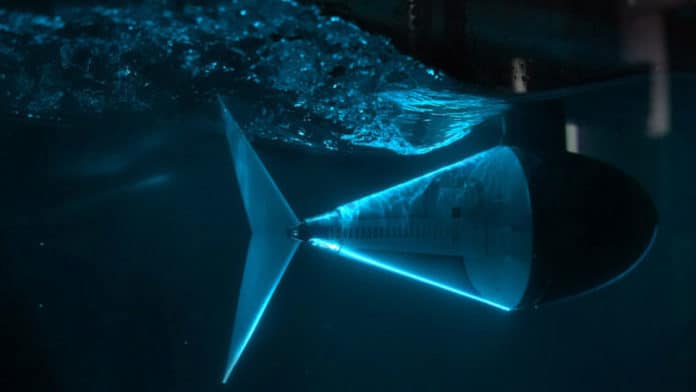The physical structure of fish is increasingly being copied in the design of underwater robots. Researchers at the University of Virginia School of Engineering and Applied Science have now discovered that by tuning the stiffness of their tails, those bots can swim much more efficiently.
Fish maintain high swimming efficiencies over a wide range of speeds. They leverage tunable flexibility by using their muscles to modulate the stiffness of their tails to achieve efficient swimming. When designing a swimming robot, a constant question for researchers is how stiff the piece that propels the robots through the water should be made. It’s a difficult question because the same stiffness that works well in some situations can fail miserably in others.
“Having one tail stiffness is like having one gear ratio on a bike,” said Dan Quinn, an assistant professor at the University of Virginia. “You’d only be efficient at one speed. It would be like biking through San Francisco with a fixed-gear bike; you’d be exhausted after just a few blocks.“
Unfortunately, it’s very difficult to measure the stiffness of a swimming fish, so it’s hard to know if and how fish are doing this. Working with his colleague and postdoctoral researcher Qiang Zhong, Quinn solved this by combining fluid dynamics and biomechanics to derive a theoretical model for how and why tail stiffness should be tuned. The model stated that the stiffness should increase with the swimming speed squared.
To test their tunable stiffness theory, the researchers built a fishlike robot based on the tail-stiffness model that utilizes a programmable artificial tendon to tune its own tail stiffness while swimming in a water channel. And it showed remarkable improvements – the underwater robot could swim over a wider range of speeds while using almost half as much energy as the same robot with a fixed-stiffness tail.
The researchers will extend their model to other kinds of swimming. The first robot was designed like a tuna; now, the team is thinking about how they could scale up to dolphins or down to tadpoles.
“I don’t think we’ll run out of projects anytime soon. Every aquatic animal we’ve looked at has given us new ideas about how to build better swimming robots. And there are plenty more fish in the sea,” Quinn said.
